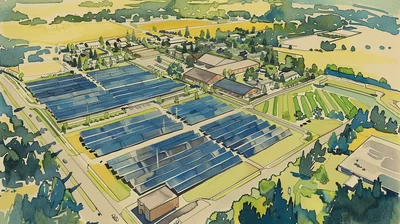Do you know the American gardener's favorite home vegetable to grow? If a home gardener could plant only one vegetable in a container, what would it be? If you thought of the tomato, you are correct. This article and future articles will discuss many aspects of the tomato.
First, is a tomato a fruit or a vegetable? Technically it is both. A botanist would use the botanical classification – tomatoes are classified as fruit because they contain seeds and grow from the flower. A nutritionist or average gardener would use the culinary classification – a vegetable because it has a tougher texture, tastes blander and often requires cooking.
The tomato has not always been so popular. Tomatoes were grown and used for centuries in South America and Mexico before they were discovered by the early explorers and settlers. After the seeds were taken back to Europe, the tomato was grown as a curiosity or ornamental plant rather than as food.
It is thought the tomato’s kinship to members of the nightshade (Solanaceae) family caused the Europeans to avoid them. This family includes a number of poisonous plants. Other nightshades are important food crops in our gardens today (besides the tomato). These are also not poisonous: peppers, potatoes and eggplants.
The first tomato seeds to reach Europe were of the yellow variety, called “apples of gold” (pomi d’oro) in Italy and “apples of love” in (pommes d’amours) in France. At the time, they were considered poisonous.
Tomatoes were brought by the colonists to America, where only a few brave gardeners ventured to eat the fruit. Then they were grown by such famous horticulturists as Thomas Jefferson as early as 1781.
They were still almost unknown as edible vegetables until after 1834, when daring Col. Robert Johnson defied everyone by eating a number of these “love apples” from a bushel basket in front of the public. Soon gardeners were striving to grow the first, biggest and best-tasting tomato.
Next are many items to consider when buying tomato seeds or plants. All should be on the seed packet or on the plant label.
In choosing your tomatoes to grow, first consider how you want to use them. Slicing tomatoes are the really big, juicy ones that are thick and sturdy for slicing. They can range in size from small (up to 5 ounces), medium (up to 5-8 ounces) and large (over 8 ounces).
Paste tomatoes (usually labeled sauce, roma or plum) are smaller and drier (concentrated flavor) with fewer seeds, making them the right choice for sauces and drying.
Cherry tomatoes are bite-sized and come in several shapes, including oblong, pear-shaped or round. These are the ones you just pick and eat or use in salads. One plant produces many, many tomatoes.
Today, tomatoes come in many colors besides red. The favorite is red-colored but becoming more popular are yellow, orange, pink, chocolate, black striped and white.
Popular tomatoes today are heirlooms, not hybridized, with seeds that will be the same kind every year if properly grown. Heirloom plants are defined as those over 50 years in age or that were developed in the 1940s or 1950s.
Also, many gardeners are choosing to grow organic tomatoes. Organic means they have been grown with the very strict use of pesticides, herbicides and fertilizers. The use of irradiation, sewage, sludge and genetic engineering are not allowed.
Consider the size of tomato plants that will fit into your garden or containers. Indeterminate means vines continue to grow and produce fruit all season until frost. Generally, large vines need support. Determinate tomatoes ripen over three to four weeks on bushy vines that usually need little or no staking. Semi-determinate do both and produce a main crop that ripens all at once but also continues to produce up until frost.
Before buying, study seed packets, plant tags, information on websites and catalogs. An excellent source to study is Totally Tomatoes, which features hundreds of tomatoes. Remember you cannot grow every tomato!







